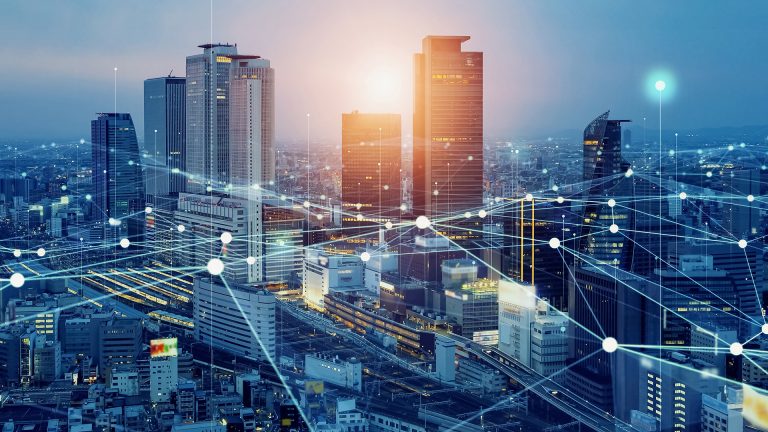ABB's Lucy Hung takes us on a tour of a new 'smart community' near the Swedish capital Stockholm. This is an example of how new advances in energy management and human-centered technology are helping residents take direct control of their carbon footprint while enjoying the best of today's environment. Community life.
Reducing energy costs is currently a top concern for European residents. Modern residents are also demanding better carbon credentials combined with smart technology and home solutions that provide ease of use, access and control so they can enjoy the best of energy-smart and high-tech living.
As industrial systems increasingly digitize and decarbonize as part of the global clean energy transition, residential buildings are also being transformed. This will usher in a new era of connected communities, populated by environmentally savvy residents who want to make the most of their home-generated energy and live more meaningful lives through engagement with smart technology.
There are new power connections at work here. It is a shift in the balance of power between the top-down organization of resources associated with “smart cities” and the bottom-up action of a new generation of “smart communities” emerging around the world. especially in Europe). These movements intersect to create a vision for the energy-efficient communities of the future.
However, sustainability, cost-effectiveness, and comfort come at a price. From heat pumps and electric vehicles to 5G, demand on domestic infrastructure is increasing and consumer decisions and spending habits are changing. Effectively tracking and sharing energy data is a priority.
This article describes how the ability to generate and share energy can help communities reduce their carbon footprint and energy costs. You can now monitor and control everything from your washing machine to your energy and security systems with a single mobile app. and how a smart community on the outskirts of Stockholm offers a blueprint for clean, cooperative and integrated living.
Achieve sustainable living at the push of a button
When it comes to the future of connected living, COVID-19 has effectively condensed decades of social and behavioral changes into just a few months. For example, office buildings are starting to incorporate touch-free interfaces to enhance hygiene. At the same time, space management, intelligent lighting and heating, ventilation, and air conditioning (HVAC) solutions can all help improve employee comfort and productivity in a post-pandemic world.
These smart devices help homeowners reduce utility bills, meet occupants' demands for flexibility and autonomy, and, more importantly, help energy systems across buildings, which account for approximately 40% of the world's energy due to high power demands. It also helps reduce your carbon footprint. consumption.
A pioneering new project in Sweden featuring ABB Smart Buildings, Samsung SmartThings and other partners will see industry groups work together to develop and deploy innovative energy management, energy consumption and carbon footprint reduction technologies. It's part of a growing trend. At the same time, a comprehensive and user-friendly smart home system increases comfort and ease of use.
The Broviholm home will be the first building in the world to have access to a single comprehensive smart home solution, with all products and devices including the ABB-free@home® smart home system, ABB's energy distribution and management technology. Masu. Everything is connected to Samsung's system. Smart Things Platform.
All real estate assets, from home appliances to energy generation, will be managed through Internet of Things (IoT) installations and apps will be integrated into Broviholm's property management platform, allowing for holistic management at the community level. . Based on Matter industry standards, energy, motion, door and window devices are controlled via the Samsung SmartThings app. ABB's Matter-based Eve devices include energy sockets, door and window contacts, motion sensors, and can also be controlled via SmartThings.
This uniquely integrated system includes security, media, lighting, blinds, door entrances, outlets, energy, appliances, heating, ventilation, HVAC, sensors, cameras, television, and energy management. A new breed of residents can use insights from a variety of connected devices on their phones to manage their total energy usage, from remotely turning off lights to charging and managing electric vehicles (EVs). Masu.
Property managers can use a separate dashboard to monitor and control existing equipment during emergencies and notify residents about new devices installed in their units to improve maintenance and operational efficiency. You can also perform equipment diagnostics and efficiency maintenance.
Broviform: Designing your life
While smart technology was previously thought of only from the perspective of individual homes, the pace of adoption in multifamily, high-rise, and multifamily developments is accelerating. For the new housing development in Brobyholm, the project partners responded by expanding their vision of smart living from the single-family apartment and house level to include the entire estate and wider community.
That vision is bold. Within a generation, a new “suburb” dominated by 500 (and eventually 2,000) single-family homes will achieve carbon-free living and enhance access to fully connected smart home technologies. This allows residents to save energy and carbon. .
 © Shutterstock/Summit Art Creations
© Shutterstock/Summit Art Creations
To maximize your potential, ABB's InSite energy management system monitors and controls key electrical assets such as photovoltaic (PV) generation, EV charging, gas and water, and optimizes your home's energy flow. will become. In addition to the data collected from each household, solar power forecasts, grid rates, and consumption patterns are taken into account to balance the grid across a community through virtual energy sharing, significantly reducing costs for the families living there. Masu.
The InSite Energy Management System manages loads based on energy data and maximizes the use of self-generated energy. For example, if there is excess energy generated by solar panels, it can heat residents' water tanks. If solar power is insufficient, the device will operate in energy saving mode. EVs placed in designated mobility zones and equipped with ABB Terra AC charger technology can be used for energy optimization and flexibility with “Vehicle-to-Everything” technology.
Additionally, all consumers and producers are connected to one easy-to-use platform, allowing them to sell their surplus electricity on a flexible market, generating income for all Broviholm residents.
smart home of the future
Accelerating the transition to net zero will require consideration of issues such as industry standardization and regulatory certainty, and accessibility to technology, innovation, financing and industry skills. Initiatives like Broviholm’s Net Zero Home project can help materialize this in real time.
Broviholm offers a glimpse into the future of housing and sustainable living. This is made possible through open technology, the adoption of industry standards, and vendors working together to innovate. Through this type of partnership and collaboration, we are able to leverage cutting-edge technology and innovation that improves people's lives and reduces our dependence on the earth's precious resources.
As global power demand increases, Broviform is an exciting example of forward-thinking and new thinking from both project partners and energy consumers, and in ABB's ambition to create flexible and future-proof technology solutions. It's another exciting step.

